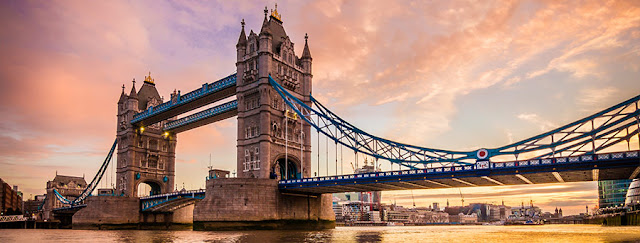UK Capital
It is no coincidence that London is called “The City”. Just think about the history, the influence on culture and economy, the British class ... it really is “The City” par excellence. In this article we reveal 10 curious facts about London, get ready for some numbers, some history and some weird facts ... in the end, you will be even more excited about London than before!
1. Everyone wants to go to London
Of course, London is known and a popular travel destination all over the world, but would you have thought that after Hong Kong and Bangkok, London is the third most visited city on the planet with 19.2 million tourists annually ?! In comparison, the city of love, Paris, has 14.4 million visitors a year, Vienna 6 million and Berlin just behind the Austrian capital 5.8 million. As if that weren't enough, London is also the largest metropolis in the European Union with a population of 12.3 million. If London were a separate country, it would have more inhabitants than eight countries in Europe (e.g. Albania or Ukraine). The British capital is truly a city of superlatives.
2. London is 1968 years old
In the year 50 AD a settlement called “Londinium” was founded by the Romans, today, after 1968 years, we know it as the metropolis of London. Londinium was located in what is now the financial district “The City of London”, also known as the “Square Mile” because of its borders, which have remained the same since the Middle Ages. With the conquest by the Normans in 1066, London became the capital of the Kingdom of England, later the city became the seat of the British royal family and still is today. In the course of history, London was also called Lundenwic, or Lundenburgh.
3. Right-hand traffic in London
As you probably know, cars drive on the left side of the road across the UK. Only in London is there the only, albeit tiny, exception. Savoy Court, in front of the hotel, is the only street in the UK with cars on the right! Right-hand traffic has been in effect on this square for over 100 years, earlier for horse-drawn carriages and later also for motorized vehicles. The reason for this is the structure of the square, which makes it easier to reach and exit the hotel from the right-hand side. It was also previously customary for the lady or dignitary to sit in the horse-drawn carriage behind the driver on the right-hand side. When the driver drove to the hotel, the driver could open the door for the lady without having to walk around the entire carriage and she could go straight to the hotel. This ancient tradition has lingered to this day and 100 years from now, Savoy Court will likely continue to drive on the right side.
4. Three Olympics in London
London is the first city and so far the only city to host the Summer Olympics three times. The first time was in 1908. Since there was a hall in London in which artificial ice could be produced, a figure skating competition was held for the first time. After that, the next Olympic Games took place in London in 1948. Germany and Japan received no invitation to these as a result of World War II and the USSR canceled. The last time the games took place was in 2012. In combination with the Olympics, London can be concidered the capital of football. You can find football fans in every corner. In combination with that you can also find the most fired up bettors on sports. If you're interested, visit https://www.bestbettingsignupoffers.co.uk/ to learn more on bookmakers. Boxing for women was on the program for the first time and for the first time there were female participants in all sports. The 250 acre Queen Elizabeth Olympic Park can still be marveled at today and you can see an extent of the size of the games.
5. International London
London has twinned cities with up to eleven other cities. These include Mumbai, Beijing and Berlin. The goal of such partnerships is to exchange culturally and economically. London is an international city in itself, while at the beginning of the 20th century it was mainly Irish, Poles, Italians and Eastern European Jews who emigrated to London, since the middle of the 20th century it has mainly been people from the former colonies, such as India, Pakistan, or Bangladesh, immigrated. So when you are out and about with the Tube, you will hear the most diverse languages from Polish to Bengali!



Comments
Post a Comment